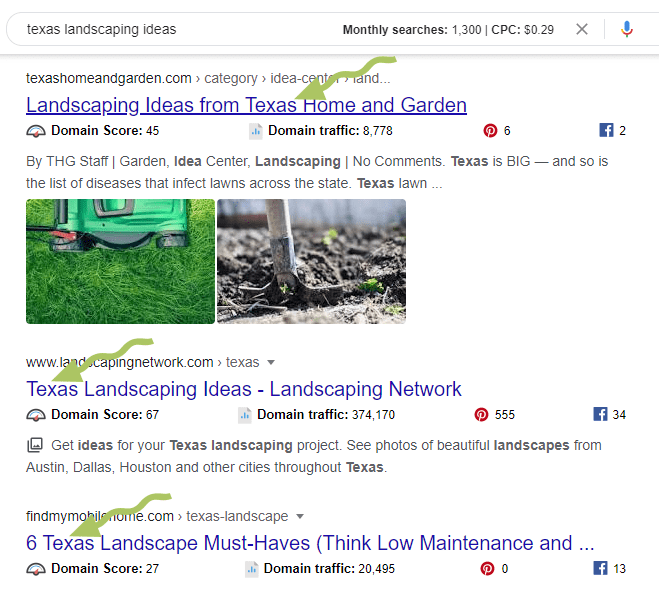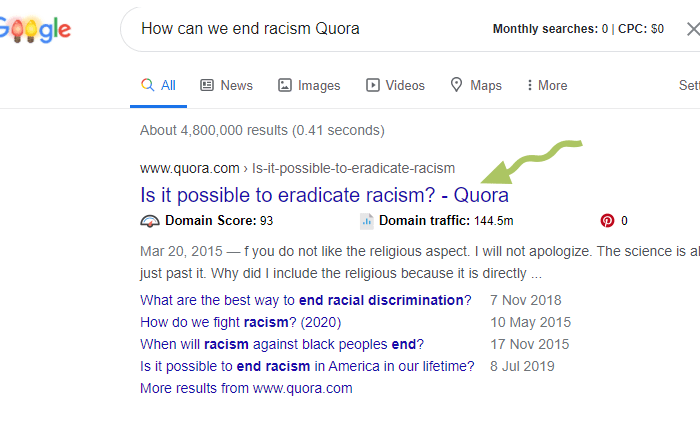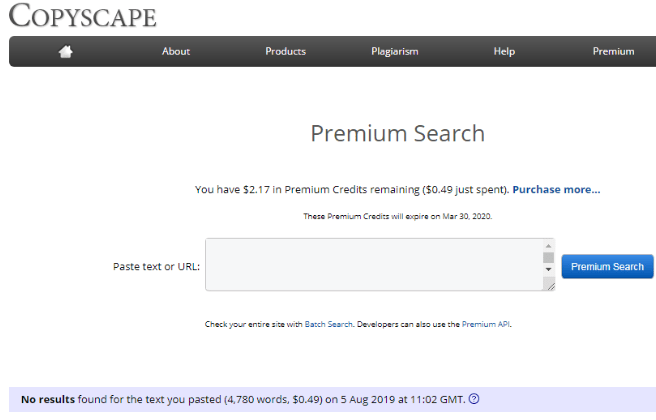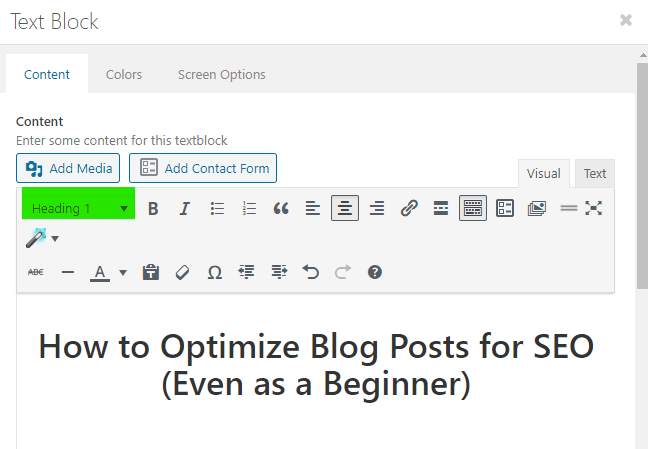I was researching to write a blog post when I stumbled on Adam’s blog. He has a pretty domain authority and thousands of monthly website visitors.
He also had the returns to show for his efforts. When writing this blog post, Adam had a net ROI of $74, 484 in one month. I bet that is a tremendous amount to make in one month by publishing excellent SEO content.
Many online marketers, business owners and freelancers want to be like Adam. But these kinds of achievements aren’t built on hope as a strategy.
They come from a deliberate effort of researching, planning, writing, and publishing quality SEO content that ranks on search engines and drive business results.
In this blog post, I’ll share 24 SEO content writing tips under the following headings:
- What is SEO content writing?
- Why you should write content for SEO
- What SEO content writers do
- 24 SEO content writing tips
What is SEO Content Writing?
First, we need to understand the meaning of the terms in “SEO Content Writing.”
What is SEO?
SEO is an abbreviation for search engine optimization. Search engine optimization involves processes that occur on and off your website to give your brand improved visibility on search engines like Google.
What is Content Writing?
Content writing entails providing written information for online consumption.
SEO content writing (writing content for SEO) involves planning, writing, and optimizing online content to attract search engine traffic.
Why You Should Write Content for SEO
Whether you own a service or product-based business, writing content for SEO can increase your profits if done correctly. Many SEO statistics prove it’s true:
- Over 67,000 Google searches happen every second
- 39% of global e-commerce traffic comes from search
- Over 80% of users ignore paid ads on search
- Nearly 93% of all online experiences begin with a search engine
And if you feel you are too local or not big enough to matter:
- 46% of all Google searches are local
- Nearly 1/3 of all mobile searches are related to location
Writing content for SEO guarantees good money for your brand. SEO content allows you to have high-value web visitors that could become clients.
If you lack the time or expertise to execute SEO writing, you should consider hiring expert SEO content writers.
What SEO Content Writers Do
SEO content writers create content like:
- Website content (landing page content, about pages, service pages, location pages, etc.)
- Pillar blog posts
- Articles (feature piece, interviews)
- Infographics
- Local SEO content for businesses
- Guest posts
The purpose of these SEO contents are:
- Drive clicks from search engine results pages (SERPs)
- Pull high-authority backlinks
- Increase your website’s rankings
- Drive users to other pages on your site
- Convert website visitors into subscribers, leads, and buyers
You might opt for the do-it-yourself approach or hire a content writer to write content for SEO purposes.
Regardless of your choice, the following SEO content writing tips will help you turn bland blog posts into engaging content that attracts better Google visibility.
24 SEO Content Writing Tips
PRE-WRITING PROCESS
1. SEO Tools
To create content that turns into ongoing revenue, you have to research.
You need to support your strategy with data and this begins by using excellent SEO tools.
Asides from identifying profitable keywords, many SEO tools help with content gap analysis, backlink analysis, on-page SEO audit, and so on.
Some SEO tools widely used by expert SEO content writers and marketers are:
| SEMrush | Ubersuggest | Ahref |
| Buzzsumo | SurferSEO | Moz Pro |
2. Keyword Research
No matter how unique your content is, search engines like Google need to notice your effort.
You can achieve this with keyword research. When targeting keywords with a tool like Ubersuggest, ensure they have a relatively high search volume (about 1,000) and low SEO difficulty score (40 or lesser), especially for a new website.

You could target any of the following types of keywords when writing your content,
A) Local search queries
What is a local search query?
Local search queries are keywords containing phrases related to a geographic location. Here are examples of local search queries:
- Copywriter Brisbane
- Texas landscaping ideas
- Dental clinic Chicago

B) Navigational search queries
What is a navigational search query?
A navigational search query contains keywords and the name of a popular online destination (forum, social network, or blog). Here are examples of navigational search queries:
- How can we end racism Quora
- Copywriting groups Facebook
- Weight loss tips Mayo clinic

C) Transactional queries
What is a transactional search query?
A transactional search query contains keywords that indicate a buying intent or subscribing to a service. These keywords could have local search queries too. An example is “best caregiver home Indiana.” The search intent is to find the best caregiver home in Indiana and make a transaction.
3. Competitive Content Audit
To get a bird’s eye view of what is working, you need to research your competitors.
Find out their best performing content and understand why the content is working.
If the content is gaining traction, you will succeed by creating something similar but unique.
One of the best tools for doing a competitive content audit is SEMrush.
Over 6 million marketers trust SEMrush.
4. Have a Writing Plan
Writing random blog posts with no idea of the end goal is not good enough. Creating a simple plan makes the writing process seamless.
There should be at least 2 essential items in your writing plan:
- An outline of your content
- A list of your focus keywords
While creating your content writing plan, these are a few questions you need to answer:
- What problems will this content solve?
- What makes me different or better than the crowd?
- How many content formats will I produce from this blog post?
- What formats will they be? – Blog posts, Videos, Infographics, etc
- Where will I promote the content (Blog, Social media, Forums)
- How will I manage the content creation process?
WRITING PROCESS
5. Use a Clever Headline
Have you ever searched Google for information and skipped the first 3 blog posts?
If you did, likely, those headlines weren’t good enough.
According to David Ogilvy, the headline is a crucial element of every written content.
Even if your content is information-rich, a bland headline ensures many persons won’t read it.
Here are a few tips for writing great headlines:
- Write headlines containing numbers
- Ask thought-provoking questions
- Be direct
- State the biggest benefit
- Write headlines that spark an emotional reaction (negative or positive)
- Include a CTA, where necessary
- Be honest and authentic. Don’t use misleading clickbait. Your random visitors will not return if they feel duped.
6. Instill Curiosity from the Start
Writing a great introduction is hard work.
A clever headline might earn a click to your blog page, but an excellent introduction causes the reader to stay glued to the conclusion.
Instead of keeping the best part last, take it up the fold. Start your blog post by highlighting the main point, benefit, or fact.
Your website isn’t a literary work. You can’t keep your audience by being slow about sharing the main points.
Your readers want you to solve their problems instantly. They don’t care about reading long proses.
So, in a few words, tell them:
- Why your article is essential
- Why they should care
- How you plan to teach them
Do all of these at the beginning of your blog post.
7. Hire an Editor or Use Grammarly
You can’t be a judge in your case. But that’s what happens when you write and edit content yourself.
Having another set of eyes to edit your work is excellent if you can afford a professional editor.
If you can’t, you can use recommended editing software like Grammarly to dot your I’s and cross your T’s.
8. Avoid Passive Voice
Passive voice takes the focus away from your readers. They are also wordy and make you sound less brilliant.
If you want to create excellent content, stick to active voice.
Which of these sentences sounds better:
- This SEO case study is a detailed and illustrative 3,000-word monster.
- This SEO case study is a 3,000 words monster with details and pictures.
The first one works for me.
Active voice makes it easy to simplify your sentences. It also provides opportunities to use generous amounts of exciting and robust action verbs.
If you are not an editor, you should consider using Grammarly Premium to turn those passive words into active voices.
9. Never Plagiarize
Plagiarism does nothing good for any website.
First, users will feel duped because they have seen the same thing elsewhere. Secondly, search engines know better.
There is no way to cut corners by using article spinning software and the likes.
It’s always helpful to check your content for plagiarism with Copyscape before publishing.

This prevents you from:
- Wasting your time in publishing content that attracts a Google penalty
- Losing leads who believe you aren’t original
If someone plagiarizes your entire website, Google might also penalize you. If this happens, ensure you respond quickly to anyone stealing your web content.
10. Use Assertive Calls-to-Action (CTA)
For every content you create, there should be at least 1 CTA. It is your duty as your website’s owner to show your readers what to click.
Phrases like “Click Here, “Shop Now,” or “Sign Up” are the basics.
You can apply many more CTAs depending on what you want to achieve.
You can use an indirect CTA like “Related Posts” to encourage your readers to read the following article.
When your readers take such action, it increases their dwell time on your website. This signals to search engines that you provide valuable content; hence, your readers remain on your website to read other excellent blog posts.

Enfold theme screenshot
CTAs are not just phrases. They can be sentences. For instance, you can get readers to comment and share their thoughts by writing, “Comment below to share your thoughts on this blog post.”
You could also ask a specific question tailored to the topic. This will keep up the engagement of your content.
11. Stick with One Brand Style
Asides from a consistent design, your brand needs a consistent writing style and language, including tone and voice.
For instance, some organizations prefer to be gender-neutral and often use “they.” Others stick with “she.”
This also extends to how you use words having two spellings. An excellent example is email.
Brands as old as the internet typically use “e-mail’. In contrast, Hubspot takes the current path and uses email without the hyphen.
Older brands can equally choose “e-book,” while others select “Ebook.” The right choice depends on what you want. This is why you need to have your writing style guide. Your style guide ensures consistency in all marketing materials.
12. Keyword Stuffing
Won’t you be disappointed to land on a web page and see a particular term that is repeated like it’s forced? For search engines, disappointment isn’t enough.
When Google crawls your web page and finds you guilty of keyword stuffing, the web page gets a Google penalty.
Keyword stuffing is an ugly SEO tactic that:
- Tanks your rankings
- Could get your page removed from search results
- Can cause loss of leads
Keyword stuffing occurs when a target term is used repeatedly on a web page or blog post with the hope of manipulating the search engines to rank higher for the target term.
Today, search engines are more intelligent. Cramming keywords into blog posts does not the content to the first page. Instead, properly place the keywords:
- In the title,
- First 100 words,
- In the H2 tag
- Site URL
Variations like LSI keywords (Latent Semantic Indexing) also help avoid keyword stuffing. LSI keywords are terms related to your primary keyword. For instance, if your focus keyword is “small business,” LSI keywords may include:
| Marketing | Money | Services |
| Market | Employees | Brand Invoice |
| Management | Social | Credit |
13. Write for Your Audience Before Search Engines
One SEO writing best practice is to put your audience first.
Writing for Google’s algorithms alone can result in lost rankings when Google does an update.
The SEO contents that rank on the first three spots of Google’s real estate have tons of tweets, shares, and likes.
All of that comes from real users, deeply moved by the content, and will likely return in the future.
Returning visitors can become customers and even your raving fans who will spread the word about your brand. So, your content should answer these questions:
- How can I offer lots of value to my readers?
- What knowledge can I share that’s different from what they know?
14. Use your Dictionary
Trying to paint the best picture for your audience is excellent, but beware of misuse. Many persons misuse words regularly because they assume they know the meaning.
Sometimes this misuse happens in terms of contractions, apostrophes, and quotations. Other times, it’s about two words with the same pronunciation but different meanings.
The solution – make your dictionary your friend. Spice up your vocabulary with onelook.com, merriam-webster.com, and dictionary.com.
15. Write for a 13 years Old Kid
No one wants to visit a website with a dictionary by their side.
Using complex words in your blog posts is the quickest way to drive valuable traffic away from your website.
Make your blog posts easy for 7th and 8th-grade kids to understand.

If you use WordPress, the Yoast SEO plugin has the Flesch reading ease feature that notifies you if your content is hard to read. You can also use readable to assess the readability of your content.
Here are additional tips to keep your content nice and straightforward:
- Use simple words: Instead of saying “utilize,” say “use,”
- Keep things informal. We all love conversations
- Use bullets or numbered lists
- Add images, charts, and graphics
- Write in short paragraphs and sentences.
- Keep words per sentence low.
- Spice up your writing by starting each sentence with a different word, especially when they appear consecutively.
- Get rid of the passive voice.
16. Give Credit by Linking to Sources
Linking your content to other websites doesn’t create an exit portal for visitors.
On the flip side, outbound links boost your rankings.
When you hyperlink to your sources, you increase your credibility because your audience knows you have done your homework.
I like to get more information on what I read. If people like me make up 90% of your web visitors, we will surely visit your site repeatedly because you make our search easier.
A review of major media houses on the web show websites that link to others outperforms those that don’t.
17. Write Long-form Blog Posts that Count
Tweets, Facebook, and other social pages might do well with posts below 300 words, but not so much on your website.
Search engines favor long-form and informative content.
Your industry determines the length of your content. If every website owner is writing 1,000 to 1,500 words for a keyword, you should stay within that range.
SEO tools like SurferSEO help in this regard. Regardless of your content length, your primary goal should be to provide value.
SEO CONTENT OPTIMIZATION
18. Write an Enticing Meta Description
Meta descriptions don’t directly influence your web page rankings. However, they give a quick overview of what your reader should expect.

An excellent meta description should be persuasive, stir curiosity, and describe your blog post in less than 160 characters.
If you use WordPress, the following plugins help in writing meta descriptions with no coding experience:
- All-in-One SEO
- Yoast
- Rank Math

19. Multimedia
It’s not enough to write engaging content. Visuals count for SEO. According to Henneke, talented writers know how to invite readers into a different world.
Consider using images and infographics to give life to your content. You can also use charts, screenshots, and embedded videos.
And for the sake of your page loading speed:
- Compress images and screenshots
- Upload your videos to YouTube or Vimeo and add only the link to your content
- Save files in Google Drive or Dropbox and add their links to your blog post
20. Monitor and Update your Content
SEO isn’t static.
Publishing content and failing to update them is a quick way to get others to outrank you.
You need to monitor and update your content to keep it at the top of the search engine result page (SERP).
In fact, with content update, Chanty kept the top SERP position for their money keyword for many years.
21. Update Broken Links
Your links serve as important signals to Google crawlers. If your links don’t work, they result in 404 errors. This isn’t good for users who clicked on such links and hoped to get more information immediately.
Aside from creating a bad user experience, broken links affect your SEO efforts by limiting link equity flow.
Use tools like SEMrush, Ahrefs, and Google Search Console to find broken links in your blog content.
22. Use only One H1 Tag
Header tags are HTML elements H1 – H6. These tags help search engine crawlers to understand your content. They also make your content easier to read by breaking it into sections.

Having multiple H1 tags is an SEO disaster waiting to occur. Multiple H1 tags won’t allow search engine crawlers to understand your blog page’s topic.
Your H1 tag will most times be the title of your blog post. Like the meta tags, you need to make your H1 interesting, enticing to click, and below 60 characters.
23. Build Backlinks Naturally and Avoid PBNs
With high-quality content, relevant backlinks, and excellent technical SEO, you stand a chance of ranking higher than your competition.
But building high-quality backlinks is challenging.
Many people buy PBN links with the hope of achieving a good reputation before search engines.
Buying cheap backlinks seems like an affordable way to build “natural links.” But the reality is different.
PBNs are bad for your website and they go against Google’s link scheme guidelines.
According to Google, any links intended to manipulate PageRank or a site’s ranking in Google search results may be considered part of a link scheme and a violation of Google’s Webmaster Guidelines. This includes any behavior that manipulates links to your site or outgoing links from your site.
No one can tell how long they can keep escaping Google’s wrath for violating their terms.
PBNs have many signs that Google’s algorithms will catch up with eventually. From a few external links, fluff or spun content, link networks, and cloaking, there are many ways to identify them.
Do you know Google banned itself (Google Japan) for 11 months for violating its link guidelines?
If they can do this to themselves, then you should run away from any link that appears unnatural. It takes a while to recover from Google penalties.
- Google could altogether remove your website from search results
- You may lose your traffic completely
- There will be a significant decline in organic traffic
- The domain may become backlisted
- It might take weeks to months for the website to recover.
Why create valuable content and reduce the number of people reading it because of a link penalty?
It isn’t worth it.
Some of the best link building practices are:
- Make your content useful, clickable, specific, and fact-packed to invite backlinks
- Mention experts and famous bloggers. You may ask them nicely to link back to you through a thank you email. If your blog has detailed information about successful blog posts they wrote in the past, they might honor your request.
- Link to relevant authority blogs to provide more value
- Gain trusted links by making actionable comments on blogs within your niche
- Publish guest posts on high authority websites
24. Keep Revamping
Markets change, demands change, and information becomes obsolete. What’s relevant today might not be applicable tomorrow.
But how do you remain on demand? – By adapting to meet those changes.
There is no such thing as creating posts and forgetting them. You have to look for ways to provide more value to your audience.
Revamping your content also provides a great avenue to strengthen your blog post and rank for more keywords.
It helps to remember that great content ranks on Google and consistently brings massive returns.
There you have it. You can take your time to implement these tips for spicing your SEO blog posts.
Does SEO content writing seem complicated or are you too busy to handle it? Let me help you remove the guesswork from your content writing process. Get in touch.

Precious Oboidhe is a B2B SaaS content strategist and writer for hire. If you need help with strategizing and creating assets for the different stages of your content marketing funnel, get in touch.








Superbly written. There are no short cuts to SEO. The only option is to do it RIGHT. Thank you precious.
Thank you🙏. To get similar results of successful marketers, implementing all they’ve done is vital. And there are no shortcuts.
Hey Precious, Great blog. You have covered all major and important points. Getting the keyword search right, to finally hitting the publish button is the right SEO journey.
That’s right Lucinda. Thank you.
Hey, It is an outstanding and highly informative blog. Asides from identifying profitable keywords, many SEO tools help with content gap analysis, backlink analysis, on-page SEO audit. Thanks for sharing this piece of information with us!
You’re welcome.
WOW! It’s really informative and a wonderful article. It gives a complete insight into SEO content writing. Thank you for publishing such content.
You’re welcome.
Hi, Precious, This is a very valuable blog for one who is entering the field. Thank you for the detailed overview and the part SEO plays in our posts.
You’re welcome.